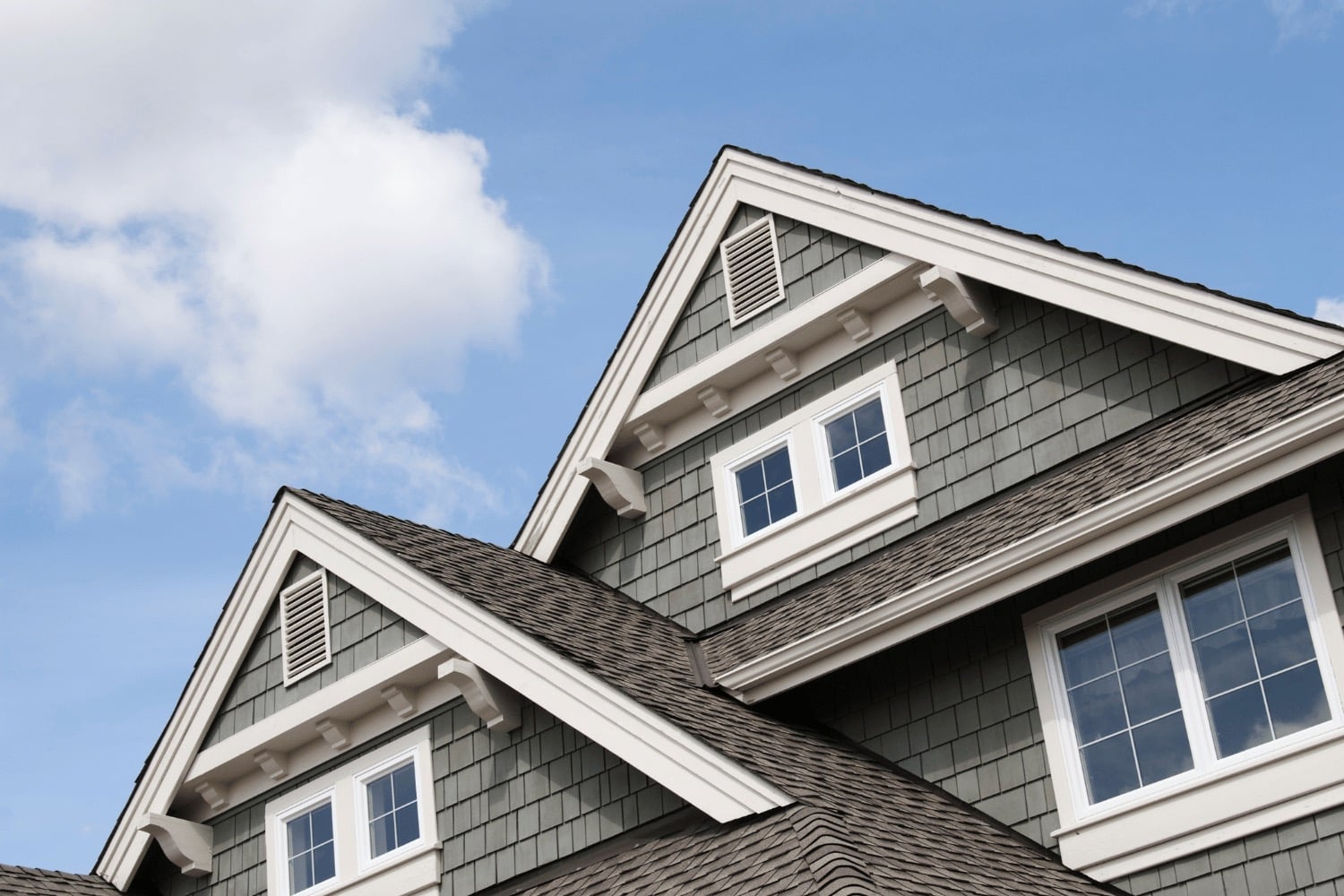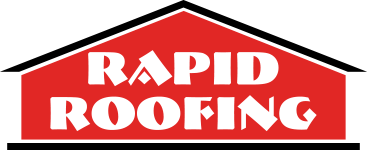Top Tips to Spot Hail Damage Roof Issues
Hail storms can wreak havoc on your roof. Identifying roof hail damage early is crucial to avoid expensive repairs. This article covers how to spot hail damage on your hail damage roof, what to do if you find it, and preventative measures you can take to protect your home.
A thorough hail damage assessment is essential to evaluate the extent of the damage.
Key Takeaways
-
Recognizing common signs of hail damage on your roof—such as bruises, dents, missing granules, and cracked shingles—can prevent extensive repairs or replacements.
-
Additional hail damage indicators can be found around your property, including damaged gutters, downspouts, siding, and outdoor furniture, reinforcing the need for a professional roof inspection and hail damage repair.
-
For suspected roof hail damage, conducting a preliminary inspection and documenting the damage before contacting a professional roofing contractor can ensure timely repairs and aid in the insurance claim process.
Common Signs of Hail Damage on Your Roof

After a hail storm, your roof might exhibit several tell-tale signs of damage. Recognizing these indicators early on can save you from extensive repairs or even a full roof replacement. Typical signs of roof hail damage include bruises and dents on shingles, missing or loose granules, and cracked or broken shingles. Each of these signs impacts the roof’s protective capabilities and could lead to further problems if not addressed promptly. Therefore, hail damage repair is a necessary step after identifying any damage.
Bruises and Dents on Shingles
One of the most common signs of roof hail damage is bruising or denting on your roof shingles. When hail hits, it can leave behind soft, bruise-like spots that are often dark in color and feel similar to a bruise on an apple. These dents and dings not only affect the appearance of your roof but also compromise the shingles’ ability to protect your home, leading to potential water leaks and other issues.
If you notice such damage, it’s crucial to get a professional hail damage roof inspection to determine the extent of the roof damage and necessary repairs.
Missing or Loose Granules

Granules on asphalt shingles serve a vital role in protecting the shingles from UV light degradation. Hail impacts can knock these granules loose, leading to exposed asphalt that is vulnerable to the sun’s damaging rays. This loss of protective granules can be detected by checking your gutters and downspouts for an accumulation of granules.
If you notice a significant amount, it’s a clear sign that your roof has sustained hail damage and may require repairs to prevent further roof damage. In cases of severe granule loss, a hail damage roof replacement might be necessary.
Cracked or Broken Shingles
Cracked or broken shingles are another severe sign of hail damage. Hailstones can create splits in shingles that may not be immediately visible but can lead to major issues like water leaks, mold growth, and structural problems. Wood shingles might show splits with sharp edges, indicating recent hail impacts.
Addressing these issues promptly with a professional roofing contractor can help prevent more extensive damage and costly repairs in the future. Additionally, understanding the hail damage roof repair cost is crucial, as it emphasizes the importance of timely intervention to avoid escalating expenses.
Additional Indicators of Hail Damage Around Your Property
Hail damage isn’t confined to just your roof. Other areas of your property can also exhibit signs that a hail storm has caused harm. Checking other areas for property damage can provide additional evidence of storm damage. Check areas like the following:
-
gutters
-
downspouts
-
siding
-
windows
-
outdoor furniture
These indicators can help you assess the overall impact of the storm and determine whether a professional roof inspection is warranted. It’s also important to consider the hail damage roof inspection cost and budget accordingly for a professional inspection.
Damaged Gutters and Downspouts
Inspecting your gutters and downspouts is a crucial step in identifying hail damage. Hail can create dings and dents in aluminum gutters and downspouts, which are more susceptible to such damage compared to steel or copper. If you’re noticing an unusually large amount of black granules in your gutters or downspouts, it may indicate that your shingles have been hit by hail and lost their protective coating. This could potentially lead to roofing issues in the future.
This can compromise the integrity of your roof and should be addressed by a professional, especially when considering hail damage roof insurance.
Impact Marks on Siding and Windows

A hail storm can also leave impact marks on your siding and windows, causing storm damage. Cracks, dents, and punctures in vinyl siding are common signs of damage. Broken, shattered, or cracked windows further indicate the strength of the hailstorm and the need for a thorough roof inspection.
Checking window frames for dents or damage can also reveal structural issues that need addressing. Additionally, considering the hail damage, a whole roof replacement or a new roof cost may be crucial when assessing the overall damage.
Affected Landscaping and Outdoor Furniture
Damage to landscaping and outdoor furniture can also indicate the severity of a hail storm. Broken branches, leaves, or flowers in your yard are signs that the storm was strong enough to cause roof damage. Similarly, dents or damage to patio furniture and decorations suggest that the hail was forceful enough to potentially harm your roof.
These observations can help you decide if a professional roof inspection is necessary. Seeking professional help for damaged roof repair services is crucial to ensure your roof is properly assessed and repaired.
Steps to Take if You Suspect Damage
If you suspect your roof has been damaged by hail, it’s crucial to take immediate action. Conducting a preliminary inspection, documenting the damage, and contacting a professional roofing contractor are essential steps. These actions can help you understand the extent of the damage, ensure timely repairs, and facilitate the insurance claim process. Additionally, utilizing hail damage roof inspection services is important to accurately assess the damage and ensure that all necessary repairs are identified by professionals.
Conduct a Preliminary Inspection
Before climbing onto your roof, always follow appropriate safety guidelines. Start by walking around your property and noting any visible signs of damage, like on a roof, such as bent, dented, or damaged flashing, roof vents, or plumbing boots. It’s advisable to contact a professional before performing a detailed inspection to ensure safety and accuracy.
This initial assessment can help you decide whether a more thorough inspection is needed, and obtaining a hail damage roof repair estimate from a professional can provide a clearer understanding of the necessary repairs.
Document the Damage
Documenting the damage is a crucial step in the process. Take detailed photos and notes of any visible signs of hail damage, including shingle damage, gutters, and other cosmetic damage affected areas. This documentation will be invaluable when filing an insurance claim and can help ensure you receive fair compensation for repairs.
Keeping a thorough record can also assist contractors in accurately assessing the damage and planning repairs. Proper documentation is especially important for a hail damage roof insurance claim, as it substantiates the extent of the damage and supports your case for coverage.
Contact a Professional Roofing Contractor
Hiring a reputable hail damage roof repair contractor is essential for properly addressing roof hail damage. A professional can provide a thorough inspection, diagnose the extent of the damage, and offer a quick solution to restore your roof. Choose a contractor with experience in handling insurance policies and claims to ensure quality repairs and accurate documentation.
Rapid Roofing, for instance, offers tailored services and has experienced roofers ready to assist you.
The Role of Professional Roof Inspections
Professional roof inspections are vital to detect damage that may not be visible to the untrained eye. These inspections help identify the extent of hail damage and determine the necessary repairs or replacements. A detailed inspection can save you from future issues by ensuring that all damage is addressed promptly. A hail damage roof inspection report is crucial as it provides detailed documentation of the damage, which is essential for insurance claims and repair planning.
Scheduling regular inspections with a professional roofing contractor ensures your roof remains in top condition.
Structural Integrity Assessment
During a professional roof inspection, the roofer will assess the structural integrity of your roof. This includes checking for signs of sagging and weakening in the support structures. Contractors will also look for workmanship issues that could have contributed to the damage.
Ensuring the structural soundness of your roof is crucial to prevent further problems and maintain the safety of your home. Understanding the hail damage roof repair process is essential to address any issues effectively.
Detailed Examination of Roofing Materials
A detailed examination of roofing materials is a key component of a professional roof inspection. Inspectors will check shingles for bruises, dents, and missing granules, which are critical indicators of hail damage. Flashing and vents are also examined to ensure they remain intact and properly sealed, as any damage here can lead to water leaks.
This thorough examination helps determine whether repairs or a full roof replacement is needed. Understanding the hail damage roof replacement process and the importance of thorough examinations ensures that all necessary steps are taken for a successful replacement.
Evaluation of Gutters and Attic
Inspectors also evaluate gutters and attics to ensure proper drainage and prevent leaks. During a structural assessment, they pay special attention to drainage patterns to ensure moisture is not collecting and penetrating shingles. This helps in identifying potential issues that could lead to water damage within your home.
Proper evaluation of these areas ensures the overall health of your roofing system and is crucial for hail damage roof repair insurance.
Filing an Insurance Claim for Hail Damage
Navigating the insurance claim process for hail damage can be daunting. Understanding your insurance policies, preparing to file an insurance claim, and working with insurance adjusters are crucial steps to ensure you receive fair compensation. This section will guide you through these steps, helping you manage the process effectively and efficiently. It’s essential to understand your hail damage roof insurance coverage to ensure you are fully aware of what your policy entails.
Understanding Your Policy
Before filing a claim, it’s essential to understand your insurance policy. Know the difference between Actual Cash Value (ACV) and Replacement Cash Value (RCV) in your policy. ACV is the depreciated value of your roof, while RCV covers the cost to fully repair or replace it. To receive the full RCV, you must complete the repairs and submit the invoices to your insurance company.
Reviewing these details, especially in your hail damage roof insurance policy, can help you understand what will be covered and avoid surprises during the claim process.
Preparing Your Claim
Preparing your claim involves the following steps:
-
Thorough documentation of the damage
-
Working with a professional roofing contractor for accurate damage assessments
-
Keeping detailed records and invoices as proof of repair costs
-
Submitting all necessary documentation to your insurance company to claim the full RCV (Replacement Cost Value)
This preparation ensures your claim is processed smoothly and you receive the compensation you deserve. Understanding the hail damage roof insurance claim process and the importance of thorough preparation can significantly impact the success of your claim.
Working with Insurance Adjusters
When working with insurance adjusters, it’s beneficial to have your roofing contractor present during the inspection, especially when dealing with a hail damage roof insurance adjuster. This ensures that the adjuster’s assessment accurately reflects the damage and necessary repairs. If there are discrepancies, communicate them promptly with your insurance provider.
In some cases, hiring a public adjuster can help negotiate a fair deal, ensuring that all damages are adequately covered. Rapid Roofing can assist with the entire insurance claim process, from inspection to final repairs.
Repairing and Replacing a Hail-Damaged Roof
Deciding between repairing minor damage and opting for a full roof replacement depends on the extent of the hail damage. Minor repairs may suffice for less severe damage, but significant structural issues often necessitate a full replacement. Understanding the signs and working with a professional roofing contractor can help determine the best course of action.
This section explores both options in detail, helping you make an informed decision. Additionally, it’s crucial to be aware of the various hail damage roof repair options and the importance of understanding your choices.
Repairing Minor Damage
Minor hail damage, such as small dings or dents, can often be fixed without the need for a full roof replacement. If less than 30% of the roof is damaged, repairs are usually more cost-effective. Quick and efficient repairs by professional roofers can prevent these minor issues from escalating into significant problems.

Addressing minor damage promptly using hail damage roof repair techniques can save you time and money in the long run.
Full Roof Replacement
When more than 30% of the roof has sustained damage, a full roof replacement is often recommended. Severe structural damage from large hailstones or high winds necessitates replacing the entire roof to ensure its integrity and longevity. A full replacement can provide comprehensive protection against future weather events, making it a wise investment for long-term home safety.
Rapid Roofing offers competitive financing options to help manage the costs of a full roof replacement. It is crucial to explore hail damage roof replacement options to choose the right one for your specific needs.
Choosing the Right Roofing Material
Choosing the right roofing material is crucial when repairing or replacing a hail-damaged roof. Asphalt shingles are popular for their durability and affordability but may not offer the best resistance to hail damage. Metal roofing, though more expensive, provides superior protection against hail.
Consulting a professional roofing contractor can help you select the most suitable hail damage roof replacement materials for your needs and budget. Rapid Roofing offers a variety of roofing options, including:
-
Metal
-
Asphalt shingles
-
Tile
-
Slate
This ensures your home is well-protected.
Preventative Measures Against Future Hail Damage
Taking preventative measures can significantly reduce the risk of future hail damage to your roof. Installing impact-resistant shingles, performing regular maintenance, and enhancing your home’s exterior resilience are all effective strategies. By proactively protecting your roof, you can minimize the impact of future hail storms and extend the life of your roofing system. Hail damage roof prevention is crucial, and taking preventative measures can save you from costly repairs in the long run.
This section provides detailed suggestions to help you safeguard your home.
Installing Impact-Resistant Shingles
Impact-resistant shingles are specifically designed to withstand harsh weather conditions, including hail storms. These shingles help minimize granule loss and protect the underlying asphalt, providing better long-term protection for your roof.
Installing Class 4, impact-resistant shingles can significantly enhance your roof’s durability and resilience against future hail impacts. Consulting with a professional roofing contractor can help you select and install the best impact-resistant shingles for your home, ensuring optimal hail damage roof protection.
Regular Maintenance and Inspections
Regular maintenance and inspections are key to preventing hail and other weather-related damage to your roof. Routine storm roof repair services can help identify and address minor issues before they escalate. Scheduling regular inspections with a professional roofing contractor ensures that your roof remains in top condition and can withstand severe weather.
This proactive approach, including hail damage roof maintenance, can save you from costly repairs and extend the lifespan of your roof.
Enhancing Home Exterior Resilience
Enhancing the resilience of your home’s exterior can protect against hail damage. Upgrading to impact-resistant siding, such as fiber-cement, can provide exceptional durability. Installing reinforced windows can prevent breakage and reduce the risk of interior water damage. These enhancements not only protect your home but also contribute to its overall value and aesthetic appeal.
Consulting with a professional roofing company can help you implement these upgrades effectively, ensuring hail damage roof resilience.
Summary
In conclusion, identifying and addressing hail damage promptly is essential to maintain the integrity and safety of your home. From recognizing common signs of damage on your roof to filing an insurance claim and choosing the right roofing materials, each step is crucial for effective repair and prevention. Regular maintenance and proactive measures can significantly reduce the risk of future damage. Protecting your home requires vigilance and the expertise of professional roofing contractors. Take action today to ensure your home remains safe and sound against future hail storms. Exploring various hail damage roof solutions is important to address any issues and prevent further damage.
Frequently Asked Questions
What are the common signs of hail damage on a roof?
Common signs of hail damage on a roof include bruises and dents on shingles, missing or loose granules, and cracked or broken shingles. Make sure to inspect your roof after a hailstorm for these signs.
How do I document hail damage for an insurance claim?
To document hail damage for an insurance claim, start by taking detailed photos and notes of any visible damage, including shingles, gutters, and other affected areas. This will provide clear evidence for your insurance claim.
When should I consider a full roof replacement after hail damage?
You should consider a full roof replacement after hail damage if more than 30% of the roof is damaged or if there is significant structural damage. It’s essential to ensure the safety and integrity of your home.
What are impact-resistant shingles, and why are they important?
Impact-resistant shingles are important because they are designed to withstand harsh weather conditions like hail storms, minimizing granule loss and protecting the roof’s integrity. This makes them a durable and long-lasting roofing option for homeowners.
How can I find a reliable roofing contractor?
To find a reliable roofing contractor, visit Rapid Roofing’s website, contact their customer service, and check local listings and reviews. Choose the one that best fits your needs.



 Residential Roofing
Residential Roofing Storm Damage
Storm Damage Multi-Family Homes
Multi-Family Homes
